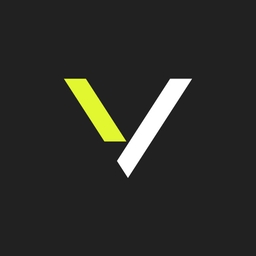As organizations continue to grapple with job advertising challenges, survey data from Talent Tech Labs reveals growing concerns about candidate quality, costs, and return on investment (ROI). These issues highlight the value of emerging tools like programmatic job advertising and job distribution, which are designed to tackle these hurdles head-on.
In the previous chapters of our series, The Next Generation of Job Advertising, we covered the key findings and insights from Talent Tech Labs’ 2024 report, The Next Generation of Job Advertising. Now, in the final chapter we’ll recap these insights and touch on what this truly means for recruiters moving forward.
For this report, “Talent Tech Labs and Veritone surveyed organizations of varying sizes across eight major markets. More than half of the respondents do at least some of their recruiting in the United States, and roughly a quarter hire in the United Kingdom. About 20% also recruit in Europe, primarily France and Germany, and 17.1% are active in Australia and Canada. While many respondents are Veritone customers, the survey was not exclusive to them.”
The rise of programmatic and job distribution tools
New innovations in job advertising have proven effective at automating much of the process, reducing the need for recruitment teams to invest time and resources into manual posting or outsourcing to recruitment marketing agencies. These tools streamline job distribution, optimize ad placement, and deliver ads to the most relevant candidates with precision. As a result, many organizations are shifting their job advertising operations in-house, relying less on third-party marketing agencies to manage this function.
However, while these tools show promise, they aren’t universally accessible. Budget restrictions and unclear or unmeasurable returns have kept some organizations from fully embracing them. The high costs of these solutions often lead to concerns that any potential savings could be canceled out, leaving recruitment teams hesitant to commit. Despite this, many companies still plan to maintain or even increase their spending on programmatic and job distribution tools, recognizing their long-term benefits.
These investments are often balanced by more cost-effective social media recruitment strategies, as platforms like LinkedIn, Facebook, and Instagram remain the most popular venues for job advertising today.
Competitive advantage or table stakes?
The big question is whether these sophisticated job advertising technologies are still viewed as a competitive edge, or if they’ve become the new standard in recruitment. From our perspective, the truth likely lies somewhere in the middle. Early adopters of these innovations have undoubtedly reaped the benefits of increased efficiency, better targeting, and cost optimization. But as these tools become more widespread, the competitive edge they once provided begins to diminish.
For instance, if a growing number of recruiters use programmatic advertising and job distribution tools to tap into previously underutilized candidate sources, can those sources still be considered unique? If many organizations use the same technologies to optimize their advertising spend, does it raise the bar for what’s considered a well-optimized ROI strategy? Once these tools become mainstream, the advantage may shift—from being ahead of the curve to simply keeping pace with competitors. The real risk for organizations lies in falling behind by not adopting these technologies as they become industry standards.
As cutting-edge solutions become table stakes, two questions remain: Where will organizations find the next competitive advantage? And what will separate those who lead in recruitment from those who are simply keeping up?
Opportunities for further innovation
While programmatic advertising and job distribution tools have addressed several major job advertising challenges, many remain unsolved. The survey data indicates that issues like candidate quality, pricing, and ROI transparency persist, even among those using advanced technologies. This presents a significant opportunity for new innovations, whether from existing platforms or new market entrants, to improve the recruitment landscape further.
For those who haven’t yet adopted these tools due to budget constraints or ROI concerns, there’s an opportunity for more accessible solutions to emerge. For those already utilizing these technologies, the next frontier will be finding more refined, cost-effective, and innovative ways to address ongoing challenges, ensuring they stay ahead of the competition.
The impact of Veritone Hire
As the landscape of job advertising continues to evolve, one thing is clear: staying competitive means continuously adapting to new technologies and strategies. While programmatic and job distribution tools have made a significant impact, they are just one part of a larger puzzle. The organizations that succeed in the future will be those that not only adopt these innovations but also seek new ways to push the boundaries of what’s possible in recruitment.
One of these ways is through adopting AI solutions that can optimize and accelerate the hiring process. With over 120 applicant tracking systems and over 2,000 publishers using the combined strengths of Broadbean, PandoLogic, and Veritone AI, Veritone Hire helps talent acquisition teams advertise all their jobs through a single vendor.
The Veritone Hire suite includes:
- Veritone Job Distribution
- Veritone Programmatic
- Veritone Media and Buying Services
- Veritone Diversity & OFCCP
To learn more, download the report, watch the Next-Generation Sourcing The Dynamic Future of Job Advertising webinar, or explore Veritone Hire’s suite of hiring solutions.





